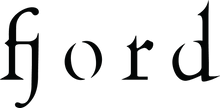“Corybantic Games” by Christopher Wheeldon is the most unpredictable work of the evening. A British-born choreographer and former dancer with the Royal Ballet and New York City Ballet, Wheeldon has become one of the leading voices bridging classical vocabulary and contemporary sensibility. The piece is set to Leonard Bernstein’s “Serenade after Plato’s Symposium”—a five-movement composition for violin and orchestra inspired by Plato’s dialogue on love. Wheeldon’s ballet offers a potpourri of ideas drawn from classical Greece, blending philosophical overtones with stylised athleticism. The adjective ‘Corybantic’ evokes the ecstatic, frenzied dances of the Corybantes, priests of the Phrygian goddess Cybele, while ‘games’ recalls the Olympic contests. The result is an imagined Greece of myth, play, and reflection, expressed through a choreographic language at once innovative and steeped in tradition, recalling works such as George Balanchine’s “Apollo” and Yuri Grigorovich’s “Spartacus.” Once again, it is the Paris Opera Ballet’s dancers who transform the concept into something marvellous.
The ballet unfolds across the five musical movements of Bernstein’s score. In the first (Lento – Allegro), Bleuenn Battistoni, Thomas Docquir, Silvia Saint-Martin, and Pablo Legasa lead the ensemble in choreography that recalls Nijinsky’s “Faun”—with planar, stylised poses and broken arm lines suggesting a two-dimensional iconography. In the second (Allegretto), the exquisite Hohyun Kang leads six female dancers in a gynaeceum-like tableau, poised between a Canova sculpture group and the Muses from Disney’s Hercules. In the third movement (Presto), Inès McIntosh and Jack Gasztowtt deliver a playful, off-balance duet full of sudden shifts of weight, ending with McIntosh being tossed playfully into the wings—to the audience’s delight. The fourth movement (Adagio) brings together Bleuenn Battistoni and Florent Mélac, with Silvia Saint-Martin, Hohyun Kang, Thomas Docquir, and Pablo Legasa forming two same-sex duets, sculptural in style and charged with quiet sensuality. The final movement (Allegro molto) crowns the ballet with Roxane Stojanov’s fiery presence, joined by the full ensemble. She embodies what seems to echo Diotima’s speech in the Symposium—a woman illuminating the essence of love, elevating the discourse from physical desire to a spiritual and intellectual quest. The originality of the concept, the unpredictability of the choreographic choices, and the impeccable, radiant dancing made “Corybantic Games” the evening’s true highlight.













comments